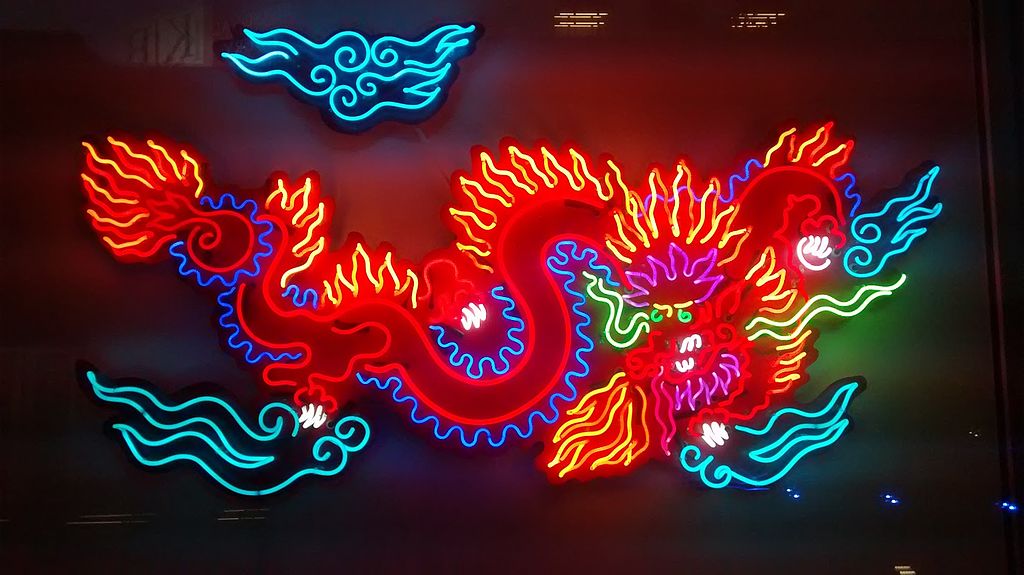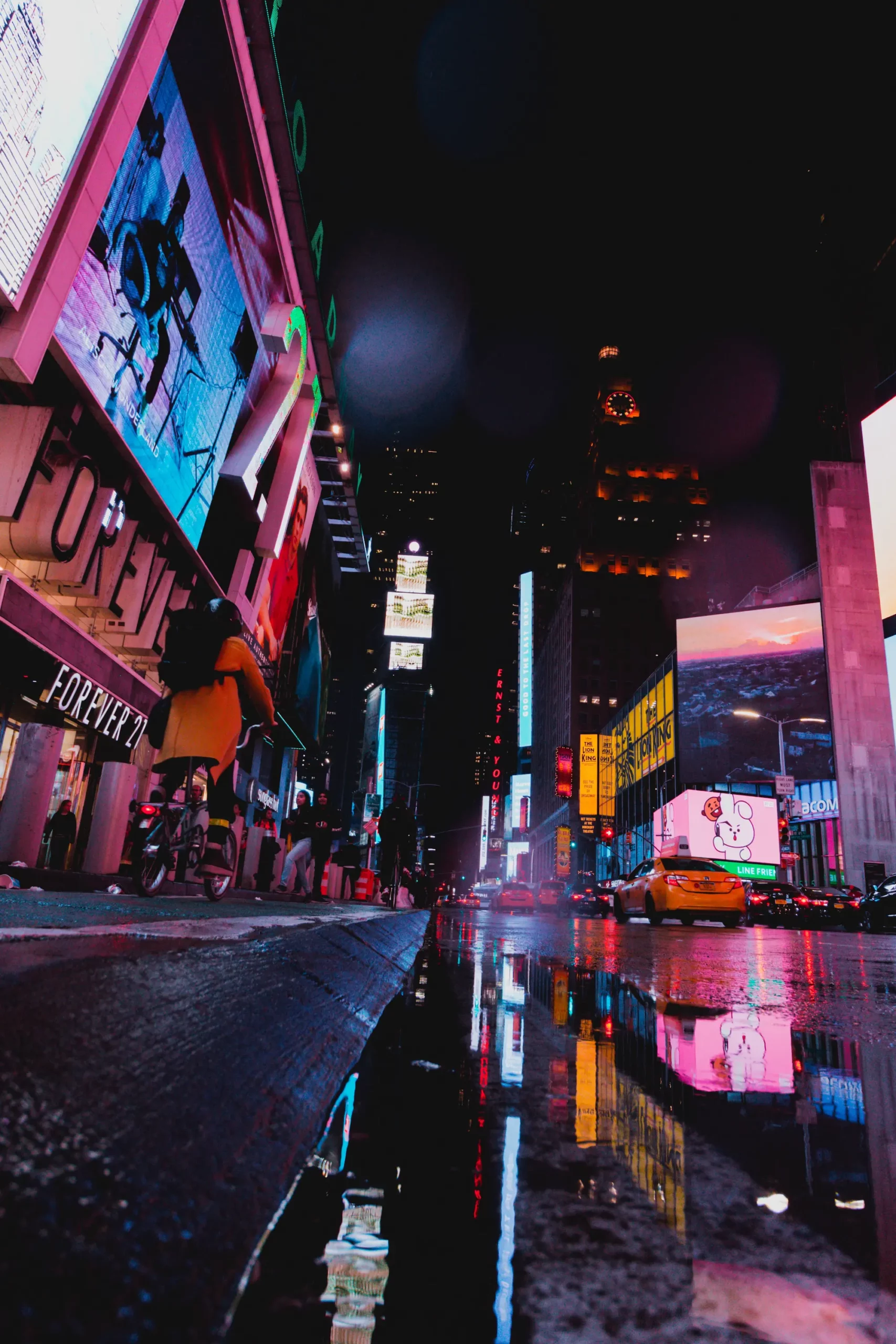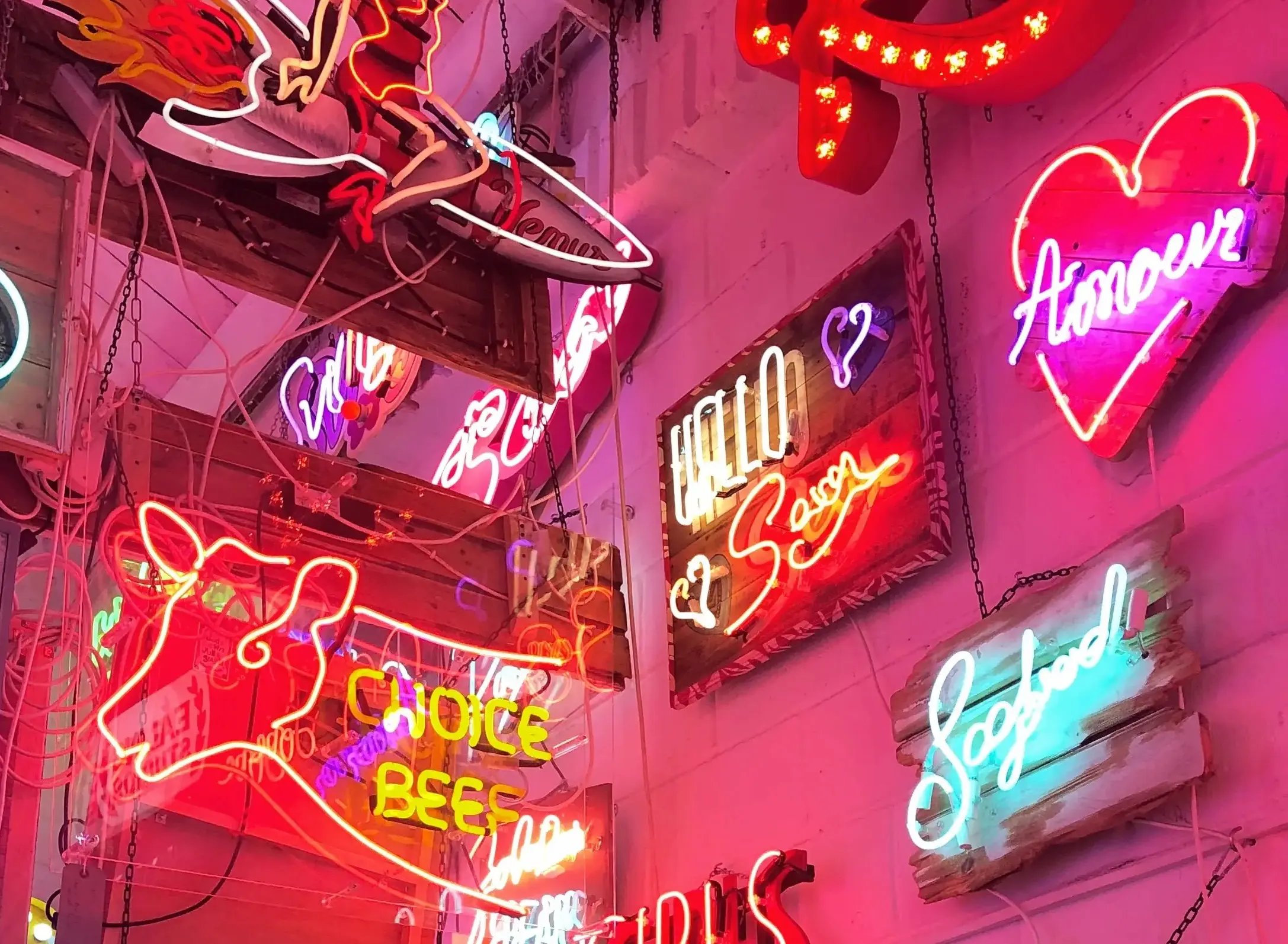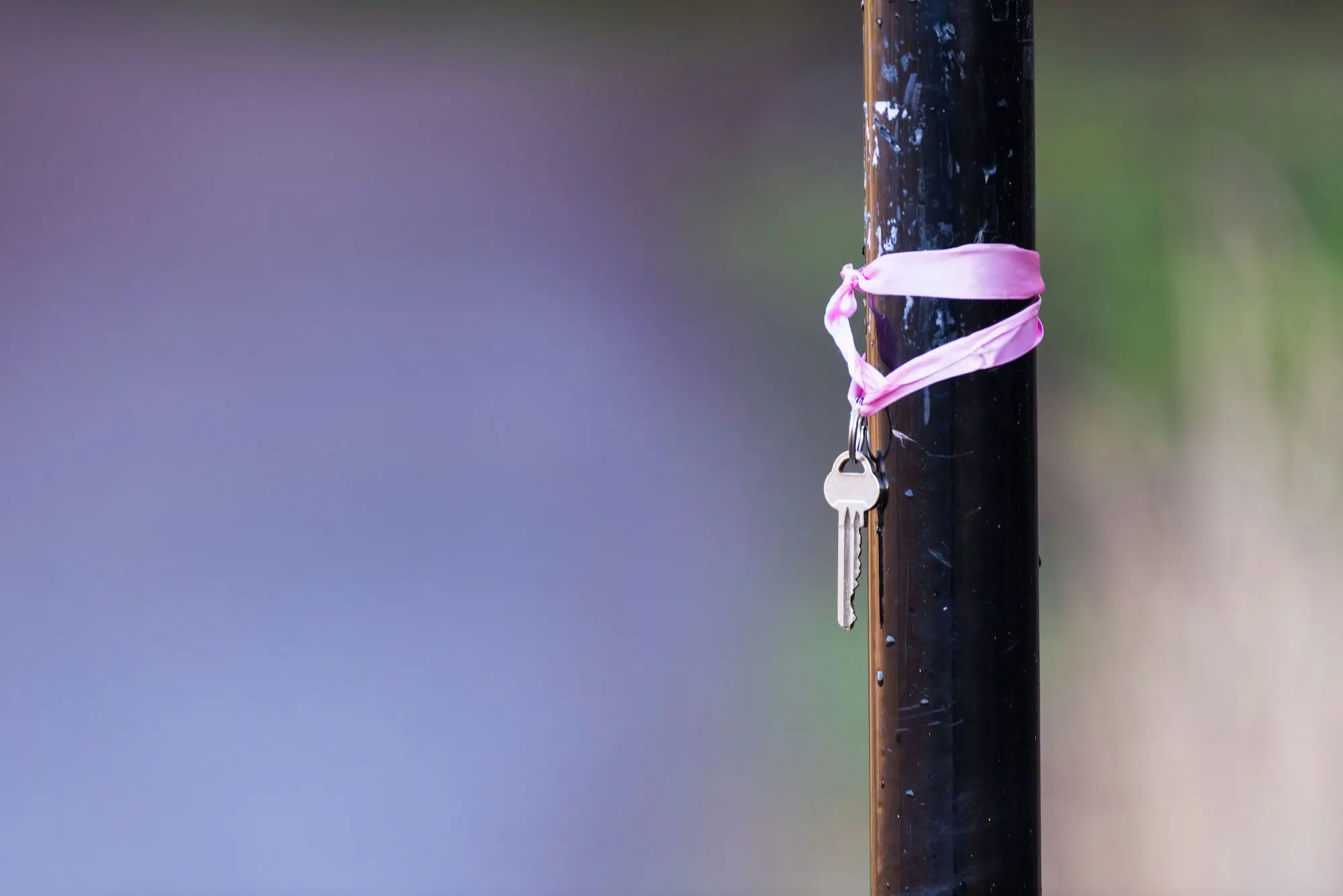Neon is making a remarkable comeback across the United States. Museums, neon parks, and preservation initiatives are breathing new life into this unique art form. Cities like Tucson and Los Angeles are attracting young artists intrigued by the handmade glow and restoration efforts that bring back old signs to life.
Origin and Impact
Introduced by French engineer Georges Claude in the early 20th century, neon signs gained popularity by electrifying noble gases in sealed glass tubes. Neon signs became synonymous with Art Deco and Googie designs.
The decline in neon’s popularity was primarily due to changing cultural perceptions and associations. In the 1970s, neon signs became associated with establishments like pawn shops, and adult entertainment venues. These negative connotations led to regulations in some cities limiting or even banning the use of neon signs, contributing to their decline in urban landscapes.
Neon Today
By the 1980s collectors and preservationists recognized the historical and artistic value of neon signs, leading to efforts to save and restore them.

Artists and designers also began to incorporate neon into their work, giving it a contemporary and innovative spin. Museums, galleries, and dedicated institutions like the Neon Museum in Las Vegas and the Museum of Neon Art in Los Angeles played a crucial role in showcasing neon’s historical significance and its potential for artistic expression.
The challenging process of crafting neon signs, characterized by the skilled manipulation of delicate glass tubes over open flames, has contributed to its rebirth as a unique art form. The level of craftsmanship required to shape the tubes, apply the phosphorescent coatings, and electrify the gases showcases the artisanal aspect of neon creation. This level of difficulty, combined with the desire for handmade and authentic artistic expressions, has driven neon’s comeback as an art medium rather than merely a commercial advertising tool.
The Future of Neon
The resurgence of neon bridges the gap between the past and future, invoking nostalgia, artistic expression, and brand identity. Workshops like “Let There Be Neon“ craft neon lights, creating a distinctive glow that – combined with the craftsmanship behind them – sets them apart from their main competitor, LED lighting.
Predicting the future popularity of technologies can be challenging. While LED technology has become dominant in various lighting applications due to its energy efficiency and versatility, neon might continue to attract those who appreciate its artistic and vintage qualities. However, whether neon will surpass LED in popularity remains uncertain and could depend on factors such as advancements in technology, design trends, and consumer preferences.



